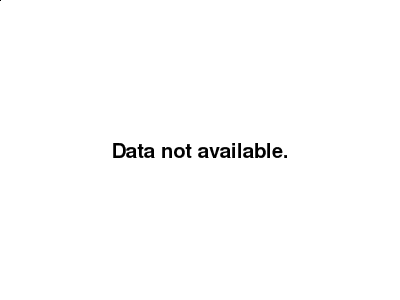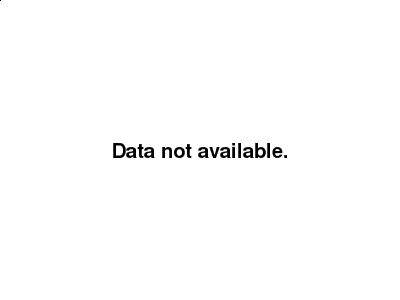The Japanese central bank is running out of monetary policy options
The Bank of Japan (BoJ) will release its monetary policy statement on Tuesday, September 20 at around 11:00 pm EDT. A press conference with BoJ Governor Haruhiko Kuroda is scheduled in the first hour of Wednesday, September 21. The Japanese central bank is seen as divided between those members who see further negative rates as the next step versus those who wish to stick to asset purchases in an effort to stimulate the growth of the economy. Governor Kuroda appears to favour negative rates, but he will have to convince the rest of the central bank to go along with him.
The BoJ ordered a review of its quantitative easing (QE) to further evaluate the results. There is growing scepticism around the decision to cut rates into negative territory. The market is uncertain on the outcome of the Japanese central bank monetary policy meeting. One scenario is for the BoJ to wrap its review with no definite action but use forward guidance to signal additional stimulus. Another outcome would be to leave negative rates on the table if the policy review is favourable but without cutting rates for the time being. An internal compromise is also possible with lower rates and upgrading its QE program but given the lack of credibility in the central bank this could have the opposite intended effect.
The Bank of England (BoE), Bank of Canada (BoC), European Central Bank (ECB) have already kept monetary policy unchanged in September. The BoJ won’t have the benefit of knowing exactly what the American central bank will announce. The Fed is heavily anticipated to keep rates on hold in September after mixed indicators with the Federal Open Market Committee (FOMC) meeting in December the most likely candidate for raising rates in 2016.

The USD/JPY has lost 0.492 percent in the last 24 hours. The pair is trading at 101.76 ahead of the monetary policy announcements from the Bank of Japan (BoJ) and the U.S. Federal Reserve. The USD had gained last week as American inflation numbers had beat estimates and with other major central banks signalling further easing ahead. The BoJ has not been as transparent as other central banks and has paid the price as the market has resisted its guidance. The USD/JPY has been caught in a range between 100 and 104.30 and failure from the BoJ to convince the market about its easing program will boost the JPY against the USD.
The strategy put forth by Shinzo Abe paid early dividends when it was launched in 2013. Out of all the arrows, the only one to find its target was the aggressive quantitive easing by the BoJ. Three years after and with several upgrades and the introduction of negative rates, the arrow might have hit the target, but it doesn’t appear to be sticking. QE programs around the world have been questioned about their effectiveness in fighting a global slowdown. The Japanese goal of reaching 2 percent inflation was lofty in 2013, but it now appears almost unreachable unless there is a major shift in strategy.

The JPY has risen ahead of the BoJ decision as the USD has weakened and the market is unsure if the Japanese central bank will stick with other central banks and show caution in September. A lack of changes to either the stimulus program or interest rate would cause a surge in the JPY which will have to be addressed by the central bank. A repeat of the July 30 meeting could be in place where minor tweaks are announce to give the market something to chew on. At that time in a Bloomberg survey 32 out of 41 analysts forecasted an expansion of monetary policy, the highest percentage in over three years. The BoJ is under pressure from all sides. Economic growth has stalled as macro economic conditions have erased the positive results of Abenomics and investors are looking for guidance from central banks but growing more disillusioned after every monetary policy meeting.
A rise by the JPY might be short lived if a hawkish Fed, a dovish hawk as there are no changes expected, sends a strong signal of a December rate hike. Another deja vu moment for a Fed that forecasted four rate hikes this year and will only deliver one, but with the majority of major central banks with their hand firmly on the easing lever has widened the interest rate divergence between nations. The U.S. presidential election are in full swing and it has always seen as an impairment of Fed monetary policy decisions. A December FOMC meeting would benefit from a known outcome and a stable market without adding volatility to the market.
Market events to watch this week:
Monday, September 19
9:30pm AUD Monetary Policy Meeting Minutes
Tuesday, September 20
8:30am USD Building Permits
12:45pm CAD BOC Gov Poloz Speaks
8:30pm AUD Mid-Year Economic and Fiscal Outlook
Tentative JPY Monetary Policy Statement
Wednesday, September 21
Tentative JPY BOJ Press Conference
10:30am USD Crude Oil Inventories
2:00pm USD FOMC Economic Projections
2:00pm USD FOMC Statement
2:00pm USD Federal Funds Rate
2:30pm USD FOMC Press Conference
5:00pm NZD Official Cash Rate
5:00pm NZD RBNZ Rate Statement
Thursday, September 22
8:30am USD Unemployment Claims
9:00am EUR ECB President Draghi Speaks
Friday, September 23
8:30am CAD Core CPI m/m
8:30am CAD Core Retail Sales m/m
*All times EDT
For a complete list of scheduled events in the forex market visit the MarketPulse Economic Calendar
Content is for general information purposes only. It is not investment advice or a solution to buy or sell securities. Opinions are the authors; not necessarily that of OANDA Business Information & Services, Inc. or any of its affiliates, subsidiaries, officers or directors. If you would like to reproduce or redistribute any of the content found on MarketPulse, an award winning forex, commodities and global indices analysis and news site service produced by OANDA Business Information & Services, Inc., please access the RSS feed or contact us at info@marketpulse.com. Visit https://www.marketpulse.com/ to find out more about the beat of the global markets. © 2023 OANDA Business Information & Services Inc.



